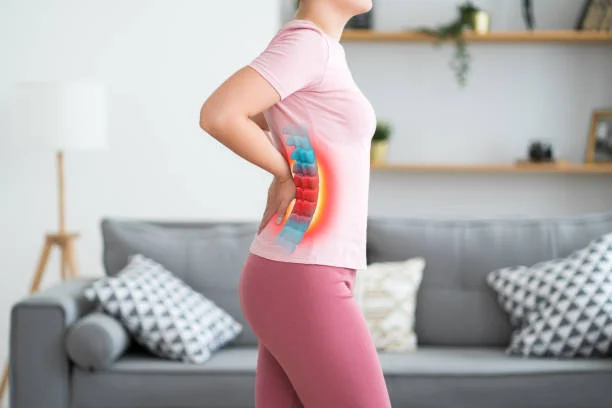Lower back pain is one of the most common health issues affecting women worldwide. From hormonal fluctuations to lifestyle habits, there are many reasons why females are more likely to experience discomfort in the lumbar region Causes Lower Back Pain in Females. In fact, studies suggest that women are at higher risk of developing lower back pain compared to men, especially during their reproductive years.
In this article, we’ll explore the major causes of lower back pain in females, the role of lifestyle and health conditions, and how to manage pain effectively.
Understanding Lower Back Pain in Women
The lower back, or lumbar spine, supports the body’s weight and allows flexibility for movement. When pain develops in this region, it can range from mild discomfort to severe, chronic pain that affects daily life.
For women, the causes are often linked to:
- Reproductive health
- Hormonal changes
- Musculoskeletal strain
- Posture and lifestyle factors
Identifying the root cause is essential for effective treatment and long-term relief.
Common Causes of Lower Back Pain in Females
1. Menstrual Cycle and Hormonal Changes
Many women experience lower back pain as part of premenstrual syndrome (PMS) or during their menstrual cycle. This happens due to hormonal fluctuations—particularly prostaglandins—that cause uterine contractions and referred pain in the lower back.
Other hormonal contributors include:
- Estrogen imbalance
- Perimenopause and menopause changes
- Pregnancy-related hormone relaxin
2. Pregnancy
During pregnancy, the body undergoes significant changes that can strain the lower back:
- Weight gain shifts the body’s center of gravity.
- Hormones loosen ligaments and joints for childbirth.
- The growing uterus puts pressure on the spine.
As a result, pregnant women often experience persistent lower back discomfort, especially in the second and third trimesters.
3. Endometriosis
Endometriosis, a condition where tissue similar to the uterine lining grows outside the uterus, can cause chronic pelvic and lower back pain. The pain is often cyclical, worsening during menstruation.
4. Polycystic Ovary Syndrome (PCOS)
PCOS may indirectly lead to back pain due to hormonal imbalances, weight gain, and inflammation. Women with PCOS sometimes report musculoskeletal discomfort, including lower back pain.
5. Pelvic Inflammatory Disease (PID)
PID, an infection of the reproductive organs, may spread and cause lower abdominal and back pain. If left untreated, it can lead to chronic discomfort and complications.
6. Poor Posture and Sedentary Lifestyle
Modern lifestyle habits like prolonged sitting, desk jobs, and excessive screen time contribute heavily to lower back pain in females. Poor posture puts extra stress on spinal discs and muscles, leading to stiffness and pain.
7. Muscle Strain or Injury
Simple activities like lifting heavy objects, sudden movements, or overexercising can strain muscles and ligaments in the lower back. Women who are physically active but don’t practice proper technique may be more prone to such injuries.
8. Osteoporosis
Women are at greater risk of osteoporosis after menopause due to reduced estrogen levels. Weak bones increase the likelihood of spinal fractures, resulting in chronic lower back pain.
9. Sciatica
Sciatica occurs when the sciatic nerve is compressed, often due to a herniated disc or bone spur. Women with sciatica may experience radiating pain from the lower back to the legs, along with numbness or tingling.
10. Obesity and Weight Gain
Excess weight, particularly around the abdomen, increases pressure on the spine and can cause chronic back pain. For women, weight fluctuations during pregnancy or due to hormonal conditions like PCOS can worsen the problem.
Lifestyle Factors That Worsen Lower Back Pain
Aside from medical conditions, certain lifestyle choices can make back pain worse:
- High heels – Wearing heels regularly shifts posture and strains the lumbar spine.
- Improper lifting techniques – Bending at the waist instead of the knees.
- Stress – Emotional stress can cause muscle tightness, leading to pain.
- Lack of exercise – Weak core muscles fail to support the spine properly.
Managing Lower Back Pain in Women
Home Remedies and Lifestyle Changes
- Exercise regularly – Focus on low-impact activities like yoga, swimming, and walking.
- Stretching – Incorporate daily stretches to release tension in the lumbar area.
- Heat therapy – Applying a heating pad can relax stiff muscles.
- Ergonomic adjustments – Ensure your workstation supports good posture.
- Weight management – Maintaining a healthy weight reduces strain on the spine.
Professional Treatment Options
When home remedies are not enough, professional help may be necessary. Treatments may include:
- Physiotherapy – Strengthening and mobility exercises tailored to your condition.
- Chiropractic adjustments – To restore proper spinal alignment.
- Medications – Pain relievers or muscle relaxants when prescribed.
- Injections or surgery – In severe cases, medical intervention may be required.
One of the most effective solutions is a structured program like Back Pain Rehab, where experienced physiotherapists provide customized care to reduce pain, improve posture, and restore mobility.
When to See a Doctor
It’s important to seek medical attention if you experience:
- Sudden, severe back pain after an injury
- Pain radiating down the legs with numbness or weakness
- Persistent pain lasting more than a few weeks
- Back pain with fever or unexplained weight loss
These may signal an underlying condition that requires professional diagnosis and treatment.
Final Thoughts
Lower back pain in females can stem from a variety of causes, ranging from hormonal fluctuations and reproductive health conditions to poor posture and lifestyle habits. While mild cases may improve with stretching, exercise, and home care, persistent or severe pain requires medical attention.
Professional programs such as Back Pain Rehab can provide long-term relief by addressing the root cause and guiding women toward a healthier, pain-free lifestyle.
By understanding the underlying factors and making proactive lifestyle changes, women can take control of their spinal health and significantly improve their quality of life.
Unlock endless ideas—click to explore more stories made for curious minds.






